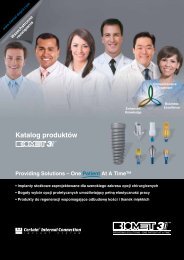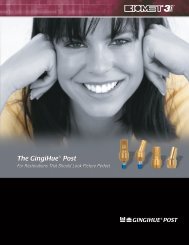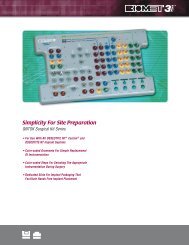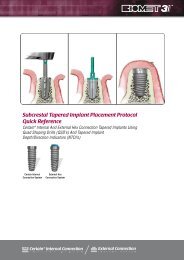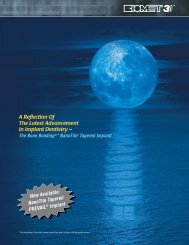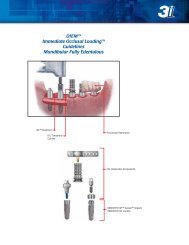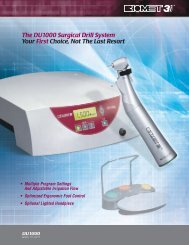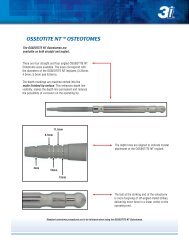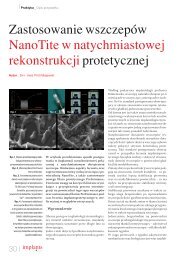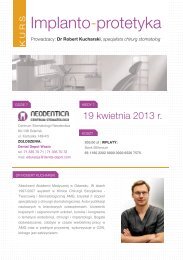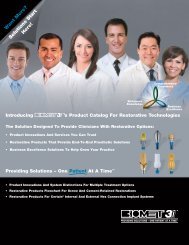SurgiGuide Cookbook - Dental-Depot
SurgiGuide Cookbook - Dental-Depot
SurgiGuide Cookbook - Dental-Depot
You also want an ePaper? Increase the reach of your titles
YUMPU automatically turns print PDFs into web optimized ePapers that Google loves.
2. Creating the temporary prosthesis based on the created master modelBased on the master model with simulated osteotomy sites prepared in the previousparagraph, the dental laboratory will be able to create a temporary bridge for your patient.The first step will be to articulate the master model referenced to the antagonistic jaw. For thetransmucosal approach, the articulation can be done based on the patient occlusion. Also forpartial edentulous bone supported case, the teeth can be used for articulation of the model.For completely edentulous bone supported cases, a simulation of the mucosa level will haveto be done, based on measurements of the mucosa thickness at certain positions, measuredin SimPlant or using needle punction measurements. Simulation of the mucosa level mayintroduce an additive error to the procedure. This can be overcome by providing biggertolerances to achieve a good adaptation/relining of the temporary bridge to the final implantpositions.Once the model is articulated, the dental laboratory can create an acrylic temporaryprosthesis in the conventional way, as if they would have received a model after post-surgicalimpression taking. Both situations start from a model with analogues. The only difference isstarting the fabrication from a simulated position, not from the final, post-surgical position ofthe implants. At this step, aesthetics, phonetics, occlusion, bite function, … should be takenin to account.Of course, the surgical situation may differ from the simulated situation, and for that reason, itis important to make an adaptable prosthesis. The dental laboratory can provide holes in thetemporary bridge which are slightly bigger in dimension than the abutments that will be usedon the implants after surgery. As such, the bridge can be fitted on the patient, and the holescan be filled with auto-polymerising resin. The size of the provided holes should be based onthe direction and parallelism of the planned implants. This system with a ‘relined temporarybridge’ is very easy to do and can eliminate costly adjustments.Another option is to use adaptable abutments. Special abutments are available on the marketthat allow for limited surgical deviations. Using these special abutments, it may be possible touse screw fixation. If surgical deviations exceed the limits of the adaptable abutment,adjustments may be necessary in the surgical theatre to adapt the prosthesis, comparable tothe auto-polymerising procedure.SURGICAL PROCEDURESFigure 3:The dental laboratory creates a temporary bridge basedon the model simulating the surgery (1)85www.SimPlant.com<strong>SurgiGuide</strong> <strong>Cookbook</strong>



